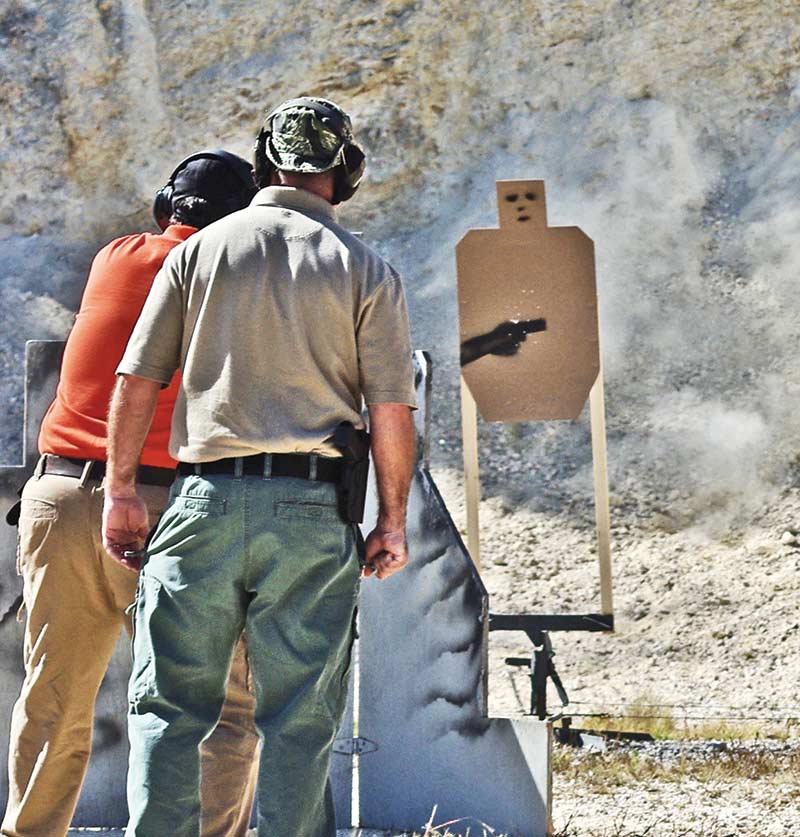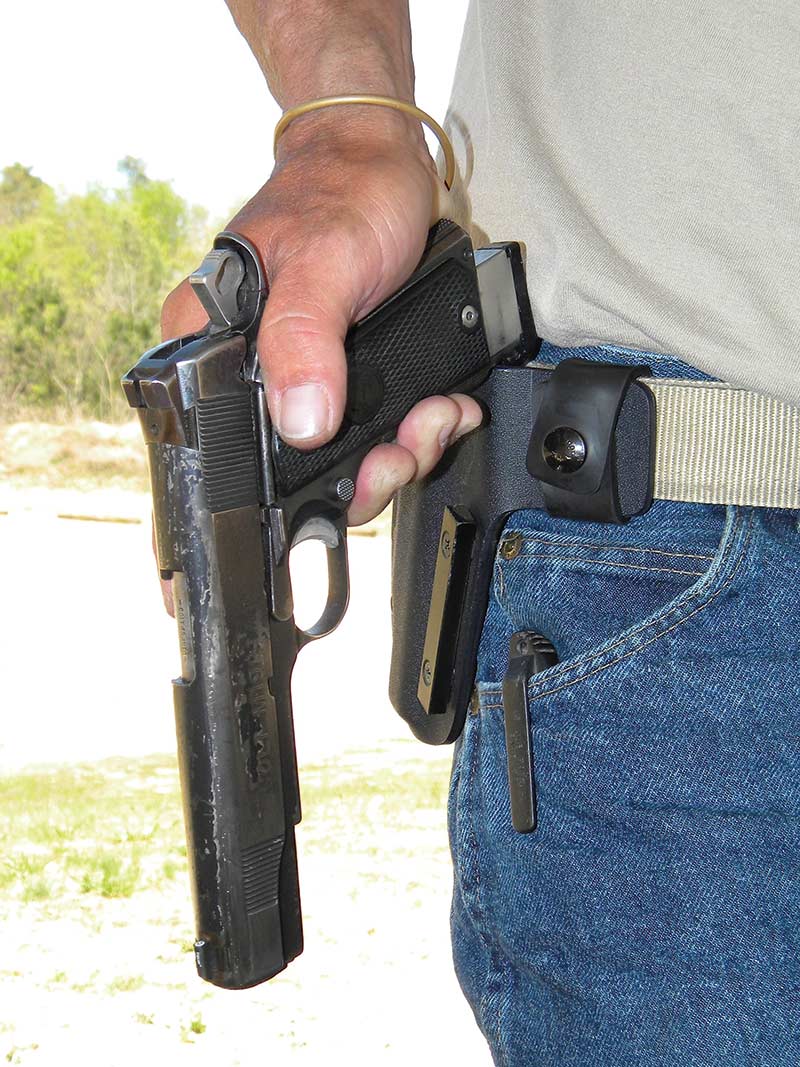‘Tactical’ — Or Just
Common Sense?
If you defend yourself with a gun, who protects you? Learn More Here
Both my grandfathers were lawmen; my dad was a “Green Beret.” These guys were my heroes; even more so as I aged and realized all they had accomplished. Our times on the range “shootin’” were by far my favorites times.
From an early age I bombarded them with “tactical” questions. “What,” I asked, “do you do when …?” I was seeking a magic answer solving all my problems. “Well,” they all replied, “you just have to use common sense.” At the time, I didn’t get it, believing they were withholding the secrets until I was of age. Today, I understand — a “Tactic” is just common sense.
The language often used when discussing the defensive use of firearms is full of strange words and terms like “situational awareness,” “action phase” or “adversary template.” At first these phrases sound intimidating — sometimes by design. After a little research, you discover “tactics” are nothing more exotic than plain common sense. Once you realize this, it’s just a matter of making things like “situational awareness” — paying attention to things around you — a habit.
For example, “situational awareness” is nothing more than using your senses to pay attention to the world around you. You watch people, looking for suspicious, abnormal behavior. About 90 percent of our communication is non-verbal, just body language. This requires studying body language.
Don’t neglect sound. You hear screaming, yelling or “a funny noise” you can’t identify. This noise is abnormal. React immediately. By the time you know there’s serious danger, it might be too late to respond. Reflections from windows and shiny surfaces show you what’s happening behind you. Pay attention to your “spidey” sense. If something doesn’t “feel” right, don’t ignore it. While examining your settings, you’re identifying escape routes and areas easily defended. Awareness also includes making a “what if” plan in case things go wrong. In other words, contemplate your surroundings with an eye toward safety.
Gun Handling Sense
At first, especially if you didn’t grow up around them, firearms are a riddle. After learning safety and gun-handling skills, removing the mystery, everything you need to do makes sense. Yes, firearms are dangerous. So are fast cars, sharp knives and chainsaws. The key is learning how to operate them safely and efficiently.
Responding to a threat of any kind, as my kinfolk said, is “just common sense.” Our first action should be to move. You move to avoid and escape, create distance, get to the protection of cover or force the threat to react to you. Communication is mandatory. “Stop!” you command the threat, “Leave my house now!” You talk with family or friends, who may or may not be armed, to coordinate your actions.
You only shoot if it’s required to stop the threat. Moving behind cover, while drawing your pistol and yelling at the threat may reward you with a “psychological stop.” According to documentation, the presence of a firearm and strong verbal commands solve the problem a couple million times a year — without having to fire.
When shooting is required, a study of anatomy reveals all we need to know. The pelvis is a great place to place your hits. The majority of people shot here drop to the ground; most don’t get back up. The pelvis is a large target, moves less than any of the body from there up and allows you to shoot at a lower angle, which may be important depending on your background. Whether you have to shoot or not, at the first chance you break contact — leave — and locate somewhere easily defended in case the threat continues the attack.
Cheap Insurance
Very few of the skills to use firearms safely and efficiently are instinctual, which adds to the mysterious nature of firearms. We’re born “knowing” how to walk. It just takes us a little time to get there. Nobody “knows” how to use a firearm. It takes someone else — a qualified instructor — to explain how to use the firearm, and the skills needed when it’s time to apply it as a weapon. Make sure to seek an instructor with a common-sense approach to the skills you need.
Instruction shows us how to do something, but remember there’s a big ground between knowing something and being able to perform these actions, usually under adverse conditions. In the beginning competence in defensive skills require conscious thought. With repetition this lifestyle becomes a habit.
“Tactics” is nothing more than ordinary, good habits, nothing mysterious. You know danger can show up anywhere, anytime. You acknowledge personal protection is an individual responsibility. After identifying the problem and solution, you plan accordingly. You train and practice with your weapon until it becomes ordinary for you to make accurate hits under any conditions. Taking the right steps to protect you and yours is cheap insurance. And that’s just common sense.
If you defend yourself with a gun, who protects you? Learn More Here






